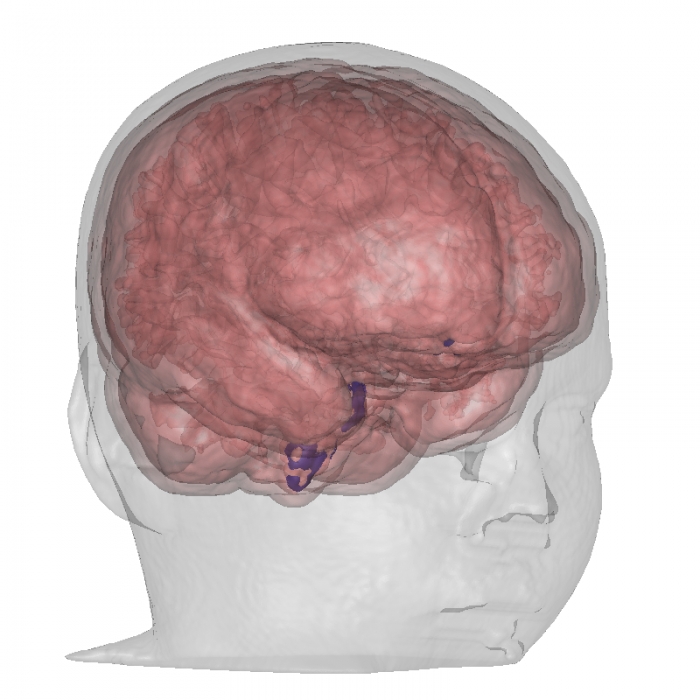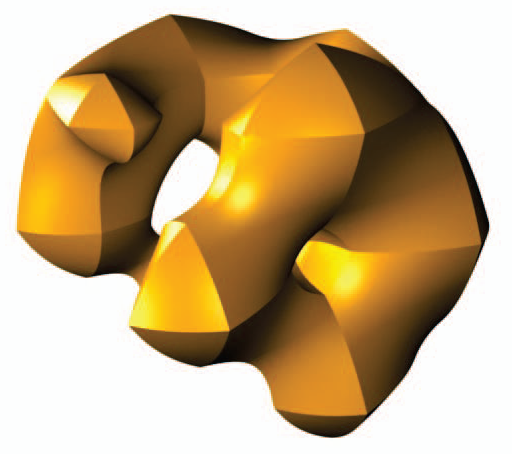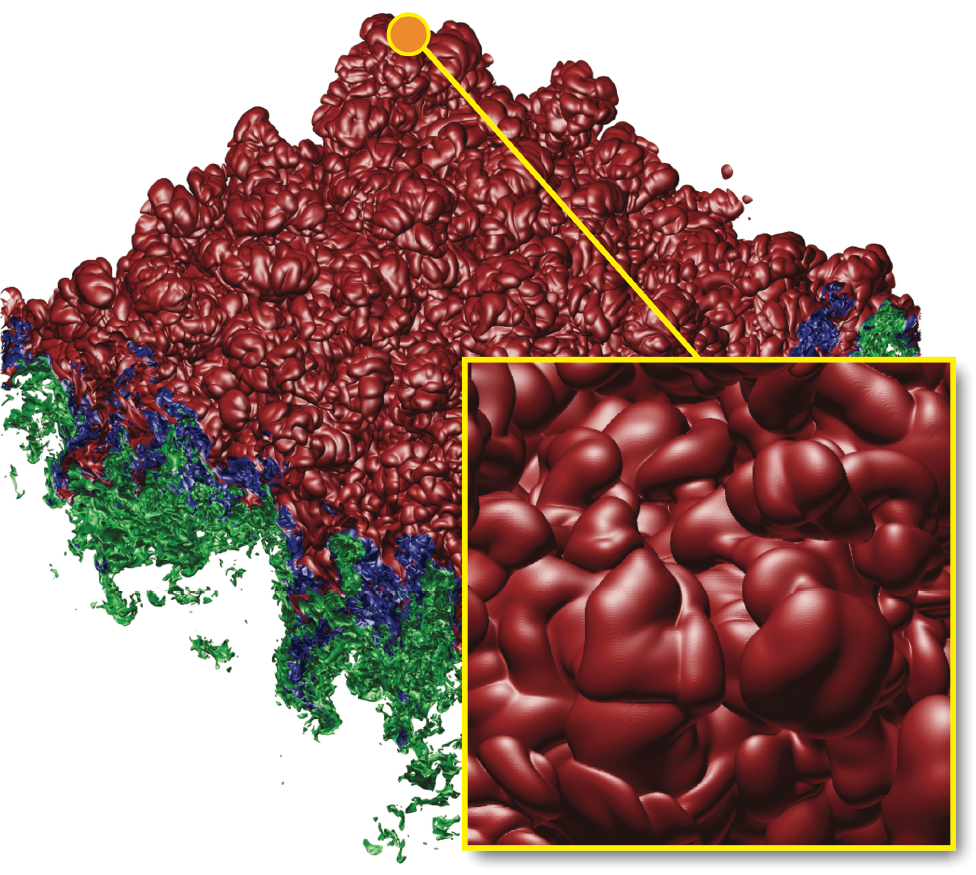SCI Publications
2024
T.A.J. Ouermi, J. Li, T. Athawale, C.R. Johnson.
“Estimation and Visualization of Isosurface Uncertainty from Linear and High-Order Interpolation Methods,” In IEEE Workshop on Uncertainty Visualization: Applications, Techniques, Software, and Decision Frameworks, IEEE, pp. 51--61. 2024.
DOI: 10.1109/UncertaintyVisualization63963.2024.00012
Isosurface visualization is fundamental for exploring and analyzing 3D volumetric data. Marching cubes (MC) algorithms with linear interpolation are commonly used for isosurface extraction and visualization. Although linear interpolation is easy to implement, it has limitations when the underlying data is complex and high-order, which is the case for most real-world data. Linear interpolation can output vertices at the wrong location. Its inability to deal with sharp features and features smaller than grid cells can lead to an incorrect isosurface with holes and broken pieces. Despite these limitations, isosurface visualizations typically do not include insight into the spatial location and the magnitude of these errors. We utilize high-order interpolation methods with MC algorithms and interactive visualization to highlight these uncertainties. Our visualization tool helps identify the regions of high interpolation errors. It also allows users to query local areas for details and compare the differences between isosurfaces from different interpolation methods. In addition, we employ high-order methods to identify and reconstruct possible features that linear methods cannot detect. We showcase how our visualization tool helps explore and understand the extracted isosurface errors through synthetic and real-world data.
2021
A. Venkat, A. Gyulassy, G. Kosiba, A. Maiti, H. Reinstein, R. Gee, P.-T. Bremer, V. Pascucci.
“Towards replacing physical testing of granular materials with a Topology-based Model,” Subtitled “arXiv preprint arXiv:2109.08777,” 2021.
In the study of packed granular materials, the performance of a sample (e.g., the detonation of a high-energy explosive) often correlates to measurements of a fluid flowing through it. The "effective surface area," the surface area accessible to the airflow, is typically measured using a permeametry apparatus that relates the flow conductance to the permeable surface area via the Carman-Kozeny equation. This equation allows calculating the flow rate of a fluid flowing through the granules packed in the sample for a given pressure drop. However, Carman-Kozeny makes inherent assumptions about tunnel shapes and flow paths that may not accurately hold in situations where the particles possess a wide distribution in shapes, sizes, and aspect ratios, as is true with many powdered systems of technological and commercial interest. To address this challenge, we replicate these measurements virtually on micro-CT images of the powdered material, introducing a new Pore Network Model based on the skeleton of the Morse-Smale complex. Pores are identified as basins of the complex, their incidence encodes adjacency, and the conductivity of the capillary between them is computed from the cross-section at their interface. We build and solve a resistive network to compute an approximate laminar fluid flow through the pore structure. We provide two means of estimating flow-permeable surface area: (i) by direct computation of conductivity, and (ii) by identifying dead-ends in the flow coupled with isosurface extraction and the application of the Carman-Kozeny equation, with the aim of establishing consistency over a range of particle shapes, sizes, porosity levels, and void distribution patterns.
2015
M. Kim, C.D. Hansen.
“GPU Surface Extraction with the Closest Point Embedding,” In Proceedings of IS&T/SPIE Visualization and Data Analysis, 2015, February, 2015.

Keywords: scalar field methods, GPGPU, curvature based, scientific visualization
2011
T. Etiene, L.G. Nonato, C. Scheidegger, J. Tierny, T.J. Peters, V. Pascucci, R.M. Kirby, C.T. Silva.
“Topology Verfication for Isosurface Extraction,” In IEEE Transactions on Visualization and Computer Graphics, pp. (accepted). 2011.

H.T. Vo, J. Bronson, B. Summa, J.L.D. Comba, J. Freire, B. Howe, V. Pascucci, C.T. Silva.
“Parallel Visualization on Large Clusters using MapReduce,” In Proceedings of the 2011 IEEE Symposium on Large-Scale Data Analysis and Visualization (LDAV), pp. 81--88. 2011.

Keywords: MapReduce, Hadoop, cloud computing, large meshes, volume rendering, gigapixels
2010
T. Etiene, L.G. Nonato, C.E. Scheidegger, J. Tierny, T.J. Peters, V. Pascucci, R.M. Kirby, C.T. Silva.
“Topology Verification for Isosurface Extraction,” SCI Technical Report, No. UUSCI-2010-003, SCI Institute, University of Utah, 2010.
C.E. Scheidegger, T. Etiene, L.G. Nonato, C.T. Silva.
“Edge Flows: Stratified Morse Theory for Simple, Correct Isosurface Extraction,” SCI Technical Report, No. UUSCI-2010-002, SCI Institute, University of Utah, 2010.
2009
T. Etiene, C.E. Scheidegger, L.G. Nonato, R. Kirby, C.T. Silva.
“Verifiable Visualization for Isosurface Extraction,” In IEEE Transactions on Visualization and Computer Graphics, Proceedings of the 2009 IEEE Visualization Conference, Vol. 15, No. 6, pp. 1227--1234. Sept/Oct, 2009.
2008
Y. Livnat, S.G. Parker, C.R. Johnson.
“Fast Isosurface Extraction Methods for Large Image Data Sets,” In Handbook of Medical Image Processing and Analysis, 2nd edition, Ch. 47, Note: (to appear), Edited by Isaac N. Bankman, Elsevier, pp. 801--816. 2008.
2007
Y. Livnat, S.G. Parker, C.R. Johnson.
“Fast Isosurface Extraction Methods for Large Image Data Sets,” In Handbook of Medical Imaging: Processing and Analysis, 2nd Edition, Ch. 44, Edited by Isaac Bankman, Academic Press, 2007.
2005
C.D. Hansen, C.R. Johnson.
“The Visualization Handbook,” Elsevier, 2005.
ISBN: 0-12-387582-X
Y. Livnat.
“Accelerated Isosurface Extraction Approaches,” In The Visualization Handbook, Edited by C.D. Hansen and C.R. Johnson, Elsevier, pp. 39--55. 2005.
ISBN: 0-12-387582-X
Y. Livnat, X. Tricoche.
“Shadows for Incomplete Point-based Isosurfaces,” SCI Institute Technical Report, No. UUSCI-2005-001, University of Utah, 2005.
R.T. Whitaker.
“Isosurfaces and Level-Sets,” In The Visualization Handbook, Edited by C.D. Hansen and C.R. Johnson, Elsevier, pp. 97--123. 2005.
ISBN: 0-12-387582-X
2004
Y. Livnat, X. Tricoche.
“Interactive Point Based Isosurface Extraction,” In Proceeding of IEEE Visualization 2004, pp. 457--464. 2004.
A. Mascarenhas, M. Isenburg, V. Pascucci, J. Snoeyink.
“Encoding Volumetric Meshes For Streaming Isosurface Extraction,” In Proceedings of the International Symposium on 3D Data Processing, Visualization, and Transmission (3DPVT), Note: UCRL-PROC-208696, pp. 293--300. September, 2004.
2003
Y. Livnat, C.D. Hansen.
“Dynamic View Dependent Isosurface Extraction,” SCI Institute Technical Report, No. UUSCI-2003-004, University of Utah, 2003.
2002
Y. Livnat, X. Cavin, C.D. Hansen.
“PHASE: Progressive Hardware Assisted IsoSurface Extraction Framework,” SCI Institute Technical Report, No. UUSCI-2002-001, University of Utah, 2002.
2001
Y. Livnat, C.D. Hansen, S.G. Parker, C.R. Johnson.
“Isosurface extraction for large-scale datasets,” In Proceedings of Scientific Visualization -Dagstuhl`2000, Edited by F. Post, 2001.
2000
Y. Livnat, S.G. Parker, C.R. Johnson.
“Fast Isosurface Extraction Methods for Large Image Data Sets,” In Handbook of Medical Imaging, Edited by A.N. Bankman, Academic Press, San Diego, CA pp. 731--745. Nov, 2000.
Page 1 of 2
